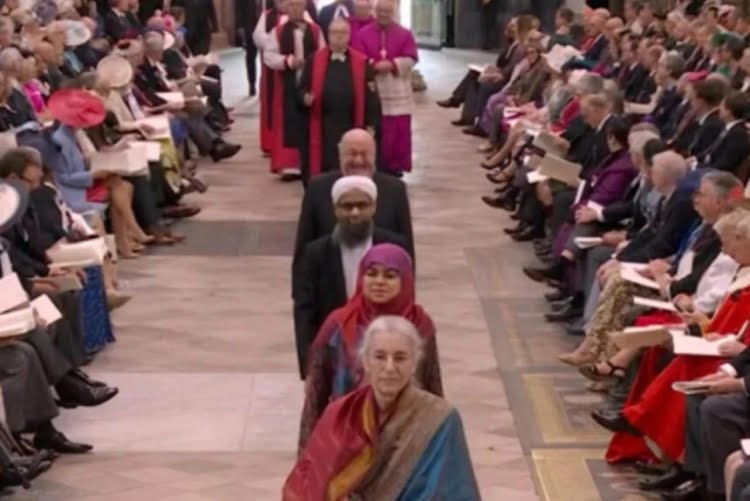Thoughts on the Coronation by the President of Bhaktivedanta Manor
By Visakha Dasi | May 23, 2023

Wanting to recognise and honour the contribution of diverse faith communities to modern Britain, as well as to encourage harmony amidst such communities, King Charles III of the United Kingdom featured leaders of different faiths in the regal pageantry of his coronation. In the history of British coronations, which date back a thousand years, it was the first time that faiths other than Christianity were included. As the representative of Bhaktivedanta Manor at this gala event, I was honoured and delighted to stand together with respected leaders of other spiritual paths.
Two days before the coronation, the small group of us ‘faith leaders’ gathered for a dress rehearsal in the Jerusalem Chamber of Westminster Abbey, an ancient, tapestried room where, we were told, King Henry IV had died in 1413. The Sikh, Jewish, Muslim, Zoroastrian, Baha’i, Buddhist, and Hindu leaders present were jovial and accepting of me and each other, all of us sharing the anticipation of our small role in the event soon to come. Although it was just a dress rehearsal, the pomp and regalia the British are renowned for were on full display. As one of the Christian leaders donned a magnificent crimson velvet robe replete with silver embroidery, I said to my newly-made Baha’i friend, “There must be a long history behind that,” at which the Christian leader, now fully adorned, turned and told us, “This was first worn in 1660 when Charles II was King,” smiled and left to practise his role.
Our group was authoritatively told when we would enter the Abbey, how we would walk up the centre aisle, where we would sit, and what we could and could not do during the event. We practised twice and then watched as the other coronation participants, including many military personnel, priests, choir and orchestra members, ran through their various responsibilities and contributions. I was astonished by the magnificence of Westminster Abbey, its sacred spaciousness, its brilliant stained glass, its dozens of organ pipes that soared upward toward the vaulted ceiling, and even its daunting network of tiny microphones suspended above the choir and orchestra. Every detail of the ceremony was minutely choreographed, scripted, and timed; nothing was left to chance.
The place, procedures, oaths, and investiture, all steeped in tradition and historicity, had deep significance that was mostly unknown to me and those around me. During the actual coronation, however, what impressed me most was how God-centric it was.
For more reflections on the coronation, you can read the entire article here.















